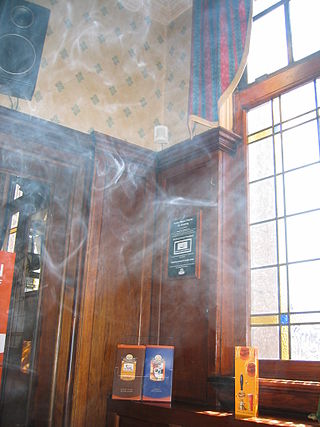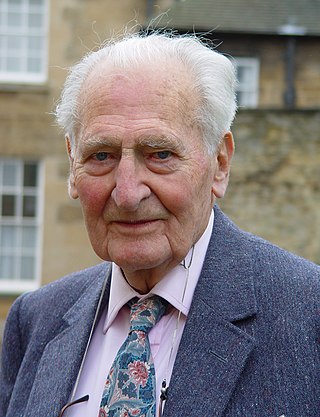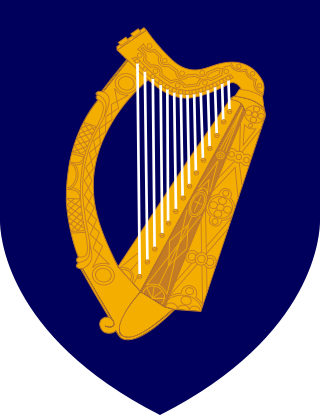
Catherine Hill (born September 6, 1946) is a retired [1] French epidemiologist and biostatistician [2] who worked at the Institut Gustave Roussy. [3]

Catherine Hill (born September 6, 1946) is a retired [1] French epidemiologist and biostatistician [2] who worked at the Institut Gustave Roussy. [3]
Hill was born Geneviève Catherine Oudin in the 14th arrondissement of Paris to François Oudin and Marie-Adélaïde Régnier. She is a graduate of lycée Marie Curie in Sceaux, Hauts-de-Seine before earning a master’s degree in math from the University of Paris, then a diploma of advanced studies (DEA) in logic and set theory from Henri Poincaré University.
In 1979-80, she was a visiting scholar at Harvard University.
Se has two children with pediatrician Harold Hill, her first husband.

A carcinogen is any agent that promotes the development of cancer. Carcinogens can include synthetic chemicals, naturally occurring substances, physical agents such as ionizing and non-ionizing radiation, and biologic agents such as viruses and bacteria. Most carcinogens act by creating mutations in DNA that disrupt a cell's normal processes for regulating growth, leading to uncontrolled cellular proliferation. This occurs when the cell's DNA repair processes fail to identify DNA damage allowing the defect to be passed down to daughter cells. The damage accumulates over time. This is typically a multi-step process during which the regulatory mechanisms within the cell are gradually dismantled allowing for unchecked cellular division.

A cigarette is a narrow cylinder containing a combustible material, typically tobacco, that is rolled into thin paper for smoking. The cigarette is ignited at one end, causing it to smolder; the resulting smoke is orally inhaled via the opposite end. Cigarette smoking is the most common method of tobacco consumption. The term cigarette, as commonly used, refers to a tobacco cigarette, but the word is sometimes used to refer to other substances, such as a cannabis cigarette or a herbal cigarette. A cigarette is distinguished from a cigar by its usually smaller size, use of processed leaf, different smoking method, and paper wrapping, which is typically white.

Epidemiology is the study and analysis of the distribution, patterns and determinants of health and disease conditions in a defined population.

Tobacco smoking is the practice of burning tobacco and ingesting the resulting smoke. The smoke may be inhaled, as is done with cigarettes, or simply released from the mouth, as is generally done with pipes and cigars. The practice is believed to have begun as early as 5000–3000 BC in Mesoamerica and South America. Tobacco was introduced to Eurasia in the late 17th century by European colonists, where it followed common trade routes. The practice encountered criticism from its first import into the Western world onwards but embedded itself in certain strata of a number of societies before becoming widespread upon the introduction of automated cigarette-rolling apparatus.
The science of epidemiology has matured significantly from the times of Hippocrates, Semmelweis and John Snow. The techniques for gathering and analyzing epidemiological data vary depending on the type of disease being monitored but each study will have overarching similarities.

Snus is a tobacco product and non-tobacco nicotine product consumed by placing a pouch of powdered tobacco leaves or powdered non-tobacco plant fibers under the lip for nicotine to be absorbed through the oral mucosa. Whereas the nicotine in tobacco-based snus derives from tobacco leaves, the nicotine in non-tobacco snus can be either naturally or synthetically synthesized.

Passive smoking is the inhalation of tobacco smoke, called passive smoke, secondhand smoke (SHS) or environmental tobacco smoke (ETS), by individuals other than the active smoker. It occurs when tobacco smoke diffuses into the surrounding atmosphere as an aerosol pollutant, which leads to its inhalation by nearby bystanders within the same environment. Exposure to secondhand tobacco smoke causes many of the same health effects caused by active smoking, although to a lower prevalence due to the reduced concentration of smoke that enters the airway.

Sir William Richard Shaboe Doll was a British physician who became an epidemiologist in the mid-20th century and made important contributions to that discipline. He was a pioneer in research linking smoking to health problems. With Ernst Wynder, Bradford Hill and Evarts Graham, he was credited with being the first to prove that smoking increased the risk of lung cancer and heart disease.

Alcohol and cancer have a complex relationship. Alcohol causes cancers of the oesophagus, liver, breast, colon, oral cavity, rectum, pharynx, and larynx, and probably causes cancers of the pancreas. Cancer risk, can occur even with light to moderate drinking. The more alcohol is consumed, the higher the cancer risk, and no amount can be considered completely safe.

Tobacco products, especially when smoked or used orally, have serious negative effects on human health. Smoking and smokeless tobacco use is the single greatest cause of preventable death globally. As many as half of people who smoke tobacco or use it orally die from complications related to such use. It has been estimated that each year, in total about 6 million people die from tobacco-related causes, with 600,000 of these occurring in non-smokers due to secondhand smoke. It is further estimated to have caused 100 million deaths in the 20th century.

Snuff is a type of smokeless tobacco product made from finely ground or pulverized tobacco leaves. It is snorted or "sniffed" into the nasal cavity, delivering nicotine and a flavored scent to the user. Traditionally, it is sniffed or inhaled lightly after a pinch of snuff is either placed onto the back surface of the hand, held pinched between thumb and index finger, or held by a specially made "snuffing" device.

Smoking is a practice in which a substance is combusted and the resulting smoke is typically inhaled to be tasted and absorbed into the bloodstream of a person. Most commonly, the substance used is the dried leaves of the tobacco plant, which have been rolled with a small rectangle of paper into an elongated cylinder called a cigarette. Other forms of smoking include the use of a smoking pipe or a bong.
Environmental epidemiology is a branch of epidemiology concerned with determining how environmental exposures impact human health. This field seeks to understand how various external risk factors may predispose to or protect against disease, illness, injury, developmental abnormalities, or death. These factors may be naturally occurring or may be introduced into environments where people live, work, and play.
Miquel Porta is a Catalan physician, epidemiologist and scholar. He has promoted the integration of biological, clinical and environmental knowledge and methods in health research and teaching, which he has conducted internationally; notably, in Spain, at the University of North Carolina at Chapel Hill, Harvard, Imperial College London, and several other universities in Europe, North America, Kuwait, and Brazil. Appointed by the International Epidemiological Association (IEA), in 2008 he succeeded the Canadian epidemiologist John M. Last as Editor of "A Dictionary of Epidemiology". In the Preface to this book he argues for an inclusive and integrative practice of the science of epidemiology. In September 2023, Porta made public through several social networks a call to suggest changes to the new, 7th. edition of the dictionary. The deadline for such contributions is 30 November 2023.

Naswār, also called nās, nāsor or nasvay, is a moist, powdered tobacco dip consumed mostly in Afghanistan, and surrounding countries, including Pakistan, India and neighboring Central Asian republics. Naswar is stuffed in the floor of the mouth under the lower lip, or inside the cheek, known as butt style stuffing, for extended periods of time, usually for 15 to 30 minutes. It is similar to dipping tobacco and snus. Swabi, Bannu, Dera Ismail Khan, Charsadda, Mohmand and Herat are renowned for their production of some of the highest quality Naswar.

Peter Boyle, FRSE FFPH FRCPS(Glas) FRCP(Edin) FMedSci, was a British epidemiologist. He conducted research on globalisation of cancer, where he showed the dramatic increase of cancer in low- and medium income countries.
Geoffrey C. Kabat is an American epidemiologist, cancer researcher, and author. He has been on the faculty of the Albert Einstein College of Medicine and State University of New York, Stony Brook. He was co-author of a discredited BMJ study funded by the tobacco industry, that erroneously said there was no association between secondhand smoke and health problems.

The Public Health (Alcohol) Act 2018 is an Act of the Oireachtas.
Pierre Grabar was a French biochemist and immunologist, born in Russia. He was the founding president of the Société Française d'Immunologie. He studied antigen-antibody reactions and developed a "carrier" theory of antibody function. His award-winning development of Immunoelectrophoresis made it possible to identify specific bodily proteins, opening new avenues in medical research.
Ora Paltiel is an epidemiologist and a professor in the Braun School of Public Health, where she was also director of the Master’s in Public Health program from 2013 until 2016, and in the Department of Hematology. She has also served as Dean at the Braun School.